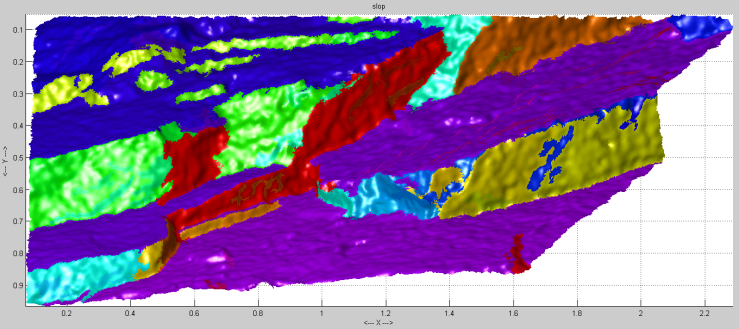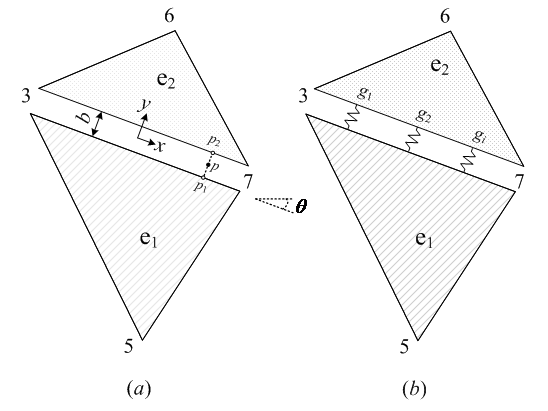The uncertainties, heterogeneities and diversities of rock materials as well as the invisibility of geostructures in tunnel engineering result in the difficulty in the prediction and control of rock stability. In order to tackle the challenges in rock characterization, initial boundary conditions, failure mode definition and numerical modelling, our group has developed a number of novel techniques and theories based on the real time ground stress monitoring during construction and tunnel surrounding rock characteristics. First, the fast acquisition of rock material information by using 3D photogeometry and laser scanning has been developed. Secondly, the realtime tunnel surrounding rock model construction and update has been implemented by using 3D geostructural model and structural surface reconstruction. Finally, fast modelling and analysis of rock stability has been realized based on large scale physical model test results and 3D continuum/discontinuum numerical analysis.
Objective
(1) To develop more sophisticated model for the accurate prediction of surrounding rock failure zone and behaviour.
(2) To develop the optimization method and theory for the design and construction of tunnel engineering.
Methodology
By using digital photogeometry, spatial interpolation and geostructural model construction, and continuum/discontinuum numerical analysis, new theories and methods are developed for accurate rock tunnel modelling and fast analysis.
Significant Results and Potential Impact
(1) Accurate rock structural surface acquisition and description method was developed based on digital photogeometry, borehole data and statistics was proposed and developed
(2) A truly three-dimensional rock failure criterion for substantial rock and rock mass failure analysis based on the Hoek-Brown criterion (now named as GZZ criterion) was developed
(3) Multiscale continuum/discontinuum analysis method for stability analysis of rock with several governing discontinuities was developed.
Principal Investigators:
Hehua Zhu, Yongchang Cai, Xiaojun Li, Xiaoying Zhuang, Caichu Xia.
Funding
(1) National Science Foundation, Key Programme (41130751), Towards Accurate Modelling of 3D Rock Stability Analysis and Its Application in Tunnel Engineering
(2) National Science Foundation, Single Grant (20121863), The Uncertainty Analysis Methods for the Modelling and Update of Tunnel Rock Stability Analysis
(3) National Science Foundation, Single Grant (51474157), 3D multiscale hydro-mechanical analysis of fractured rock using phase field model
(4) National Science Foundation, First Grant (51109162), 3D stability analysis of high rock slope of hydropower station with multiple intersecting joints using meshless methods and level sets
(5) Research Programme by the Ministry of Communication (2011ZB04), The 3D digital reconstruction of rock joint surface and its application in tunnel engineering in western China road tunnel construction.
Key Publications(*denotes corresponding author)
(1) Lianyang Zhang, Hehua Zhu. Three-dimensional Hoek-Brown strength criterion for rocks. Journal of Geotechnical and Geoenvironmental Engineering. 2007, 133(9): 1128-1135
(2) Li Xiaojun, Zuo Yulong, Zhuang Xiaoying, Zhu Hehua. Estimation of fracture trace length distributions using probability weighted moments and L-moments. Engineering Geology, 2014, 168: 69-85.
(3) Yongchang Cai*, Hehua Zhu, Xiaoying Zhuang. A continuous/discontinuous deformation analysis (CDDA) method based on deformable blocks for fracture modeling. Frontiers of Structural and Civil Engineering, 2013, 7(4): 369-378.
(4) Xiaoying Zhuang, Junwei Chun, Hehua Zhu. A comparative study on unfilled and filled crack propagation for rock-like brittle material. Theoretical and Applied Fracture Mechanics, 72: 110-120, 2014.
(5) Xiaoying Zhuang, Qing Wang, Hehua Zhu. A 3D computational homogenization model for porous material and parameters identification. Computational Materials Science,doi: 10.1016/j.commatsci.2014.04.059, 2014.


(a) Noise filtered before Delaunay triangulation (b) Delaunay triangulation without noise filtered
Fig. 1 The 3D structural surfaces reconstruction

Fig. 2 The partition of structural surface after optimization

Fig. 3 The 3D rock yield surface

Fig. 4 Unified continuum and discontinuum method



